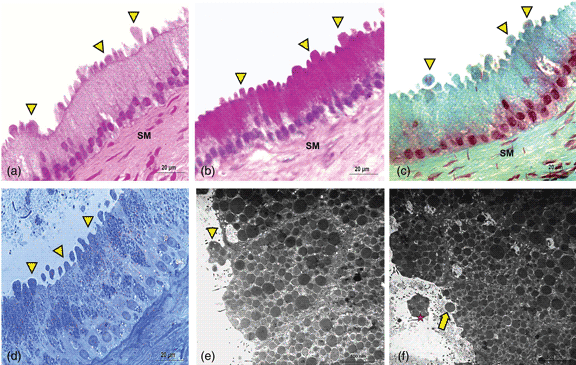Published online by Cambridge University Press: 22 June 2021

The ductus deferens is a fundamental part of the male genital tract and the continuation of the epididymal duct. As a male secondary sex organ, the ductus deferens plays a crucial role in the nourishment, storage, and maturation of spermatozoa. Some studies have provided information about the ductus deferens structure in reptiles; however, the full description of the ductus deferens remains to be clarified. The current study aimed to describe the Nile monitor lizard (Varanus niloticus) ductus deferens from histological, histochemical, and ultrastructural perspectives. The results revealed that the ductus deferens is formed histologically from two main cell types: principal and basal. The principal cells were tall and filled with periodic acid Schiff (+)/alcian blue (−) cytoplasmic granules. The basal cells were found just above the basement membrane. By transmission electron microscopy, the principal cells exhibited typical protein-secreting cell features. Additionally, some intraepithelial cells, such as halo cells, undifferentiated mesenchymal cells, and agranular leukocytes, were identified. This study presents the first detailed description of the Varanus niloticus ductus deferens. Further immunohistochemical studies are required to explore the function(s) of the cellular components.